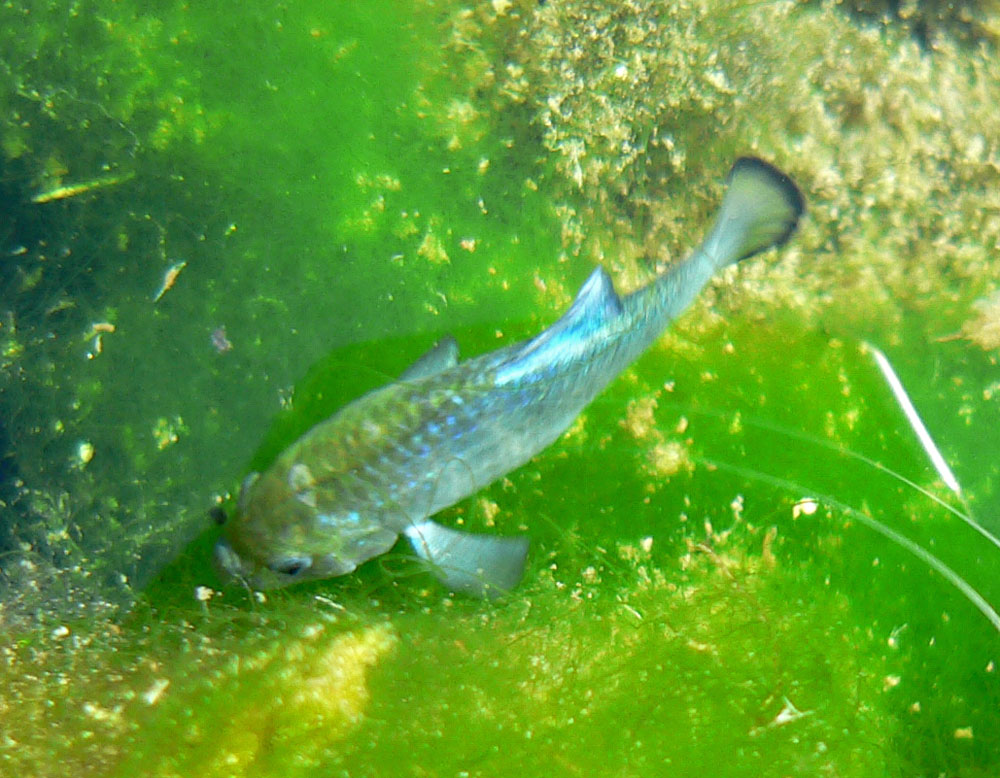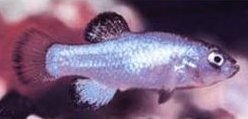Out in Nevada
The Devils Hole is shaky.
Death Valley is an astonishing place. I was lucky enough to spend a few weeks there in 2003, hindering a friend of mine with her sedimentological fieldwork. Even though the temperature often verged on infernal, it was a natural scientist's delight. From Badwater to Dante's Peak via Mosaic Canyon, every corner seemed to hide something geologically amazing.
 |
| The Badlands of Zabriskie Point, Death Valley National Park. |
The biology was pretty impressive too: we encountered roadrunners and tarantulas and kangaroo rats and cow-killing velvet ants. There was one corner of Death Valley we didn't visit, though, and it hid a feature that was both geologically and biologically remarkable: the Devils Hole.
 |
| Devils Hole, Death Valley National Park, Nevada. |
At least 130 metres deep, but less than 5 metres wide, Devils Hole is a cavern formed around a fault in Cambrian carbonate rocks. The waters within it are warm and salty, with a constant temperature of around 93 degrees Fahrenheit. Recent research has shown that the hole is fed by groundwater moving in from the Nevada Test Site, but there has been water in there for a very long time.
This is thanks to Lake Manly, a watermass that filled Death Valley during the last ice age. As the climate warmed and dried up over the last few thousand years, so did Lake Manly; only small relics of it remain at the surface*, of which Devils Hole is one. And this is where the biological story gets interesting.
All in the valley of Death
During our fieldwork, I was reading Steve Jones' book Almost Like A Whale. I wasn't reading it fast enough, though. I only learnt about the Devils Hole pupfish after we'd left Death Valley. It was deflating, therefore, to encounter Jones' description too late of a fish whose entire species "was once reduced to a global habitat of a bucket when its home dried up."
Its name alone would have grabbed my attention, but learning that every single Devils Hole pupfish in the universe had once lived in a ranger's pail was too much. This was a tiny fish one couldn't help but love, and I'd missed my chance to chase it.
(*but the groundwater forms one of the largest aquifers in the USA.)
 |
| Any room for a pupfish? |
Rode the six hundred
Not that there were many Devils Hole pupfish left to love in 2003. Though not the only pupfish species in Death Valley National Park, they are the most vulnerable. Historically, their population fluctuated annually between 100 and 500 individuals. It began dropping in the 1990s, though, and by 2006 just 38 remained. The Nevada Fish and Wildlife Office started an emergency campaign to save the species.
The Devils Hole pupfish was officially recognized as endangered in 1967, but became critically threatened in the 1970s. Agricultural groundwater extraction in the Ash Meadows area caused the water levels in the Devils Hole to drop, and since the pupfish spent most of their time on a shallowly submerged ledge, they were in peril.
A court case in 1976 put a stop to large-scale water removal and, in 1984, Ash Meadows was declared a National Wildlife Reserve. The future looked brighter for Cyprinodon diabolis, and the population began to recover. Then came the mysterious (and severe) decline of the 1990s, and to try and provide a refugium, the authorities opened a pupfish station.
 |
| Pupfish refugium, Point of Rocks Springs, Ash Meadows. |
Someone had blundered:
Detailed environmental, ecological and biological research was required to figure out how the pupfish could be saved. Unfortunately, with such a miniscule population, they were very difficult to study safely, and vulnerable to almost any unexpected change. This case was proven spectacularly in September 2004, when a flash flood hit the region.
Scientists from Southern Oregon University were in the reserve, monitoring pupfish reproduction. The flood transported masses of sediment into the Ash Meadows refuge, reducing the pupfish habitat. Rather more critically, however, the flood also washed a box containing the scientists' fish traps straight into the Devils Hole. The traps got out, the pupfish got in, and then they couldn't escape again, and starved. In one fell swoop, a third of the population was wiped out. Salvation turned to slaughter.
This was the one thing we didn't want to happen.
All that was left of them
It came as little surprise then, that pupfish numbers were so low by 2006. Intense efforts by the authorities saw them increase over 2007 and 2008, but this was a brief upward trajectory. The autumn census for 2012 has revealed the lowest number of Devils Hole pupfish ever recorded for the post-spawning season: 75.
Without ever having evolved them, this miniature vertebrate seems to be on its last legs. Just to add tectonic insult to anthropogenic injury, it transpires that distant earthquakes get funnelled into subterranean tsunami. The waves might not be enormous, but when you're less than an inch long, what chance have you got?
Earthquake-generated waves in the Devils Hole, March 2012.
Back from the mouth of Hell
Millions of dollars have been spent on pupfish conservation: millions of dollars that don't seem to have made much of a difference. An editorial in the Las Vegas suggests it's time to give up, and spend the money instead on projects that are 'sensible and affordable'. It's hard to disagree.
Yet maybe, just maybe, the Devils Hole pupfish does have a chance of survival. Some years ago, at the Point of Rocks refugium (figured above), a transplanted population somehow cross-bred with a different pupfish species, and proliferated with extraordinary speed. Evolutionary biologist Andy Martin has therefore suggested that deliberate hybridization could bring Cyprinodon diabolis back from the brink.
 |
| This is not a Devils Hole pupfish. Or is it? |
Inevitably, such an idea is controversial. This is genetic engineering, say opponents. This is meddling, tinkering, playing God. But we've been meddling and tinkering for decades now, so it seems crazy to suddenly try and plead purity. No-one but a small number of scientists would actually be able to tell the difference between a 'pure' pupfish and a 'mutant', and surely, in the end, evolution is simply about survival.
Would the public complain? Would the pupfish complain? It seems unlikely, and if it keeps the Devils Hole populated, does it matter if the genetics have changed?
That said, the Devils Hole pupfish is undoubtedly a hardy little blighter. It has survived in its microcosm for at least 10,000 years, without our interference. Perhaps we should just leave it be again and see what happens.
Theirs not to make reply,
Theirs not to reason why,
Theirs but to do and die.
(With apologies to Alfred Lord Tennisball)

Comments